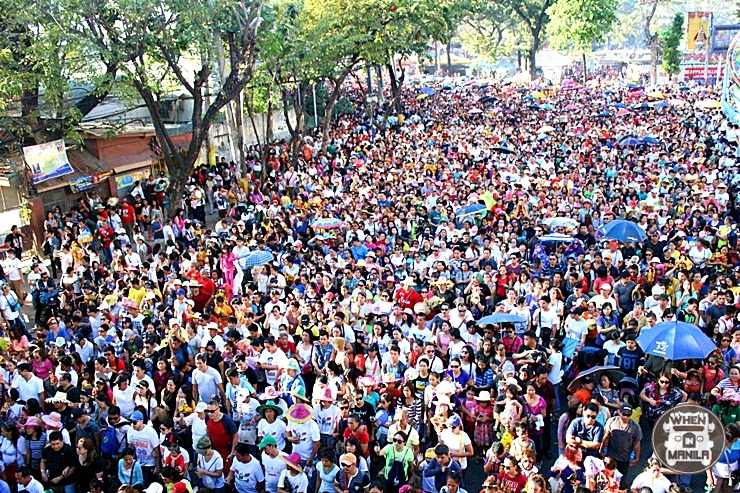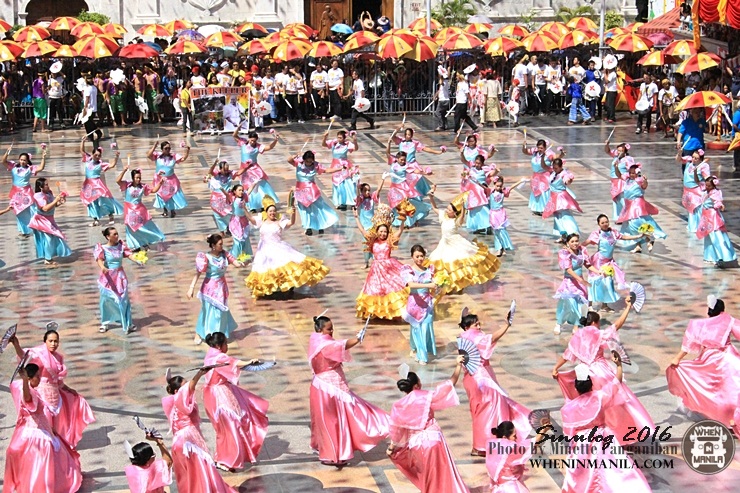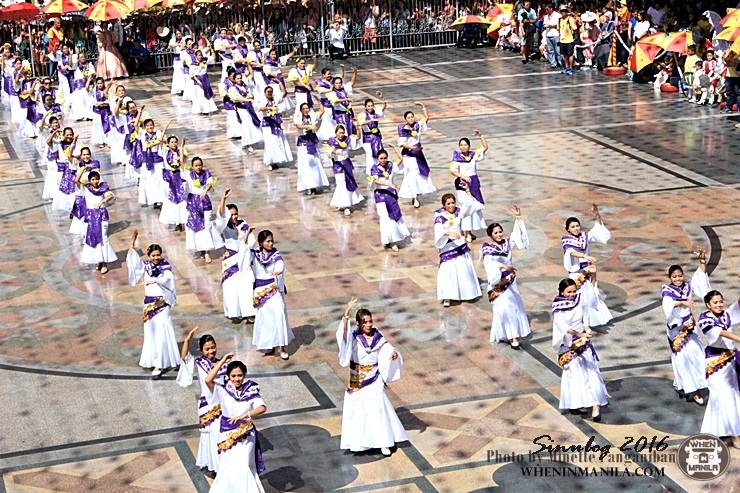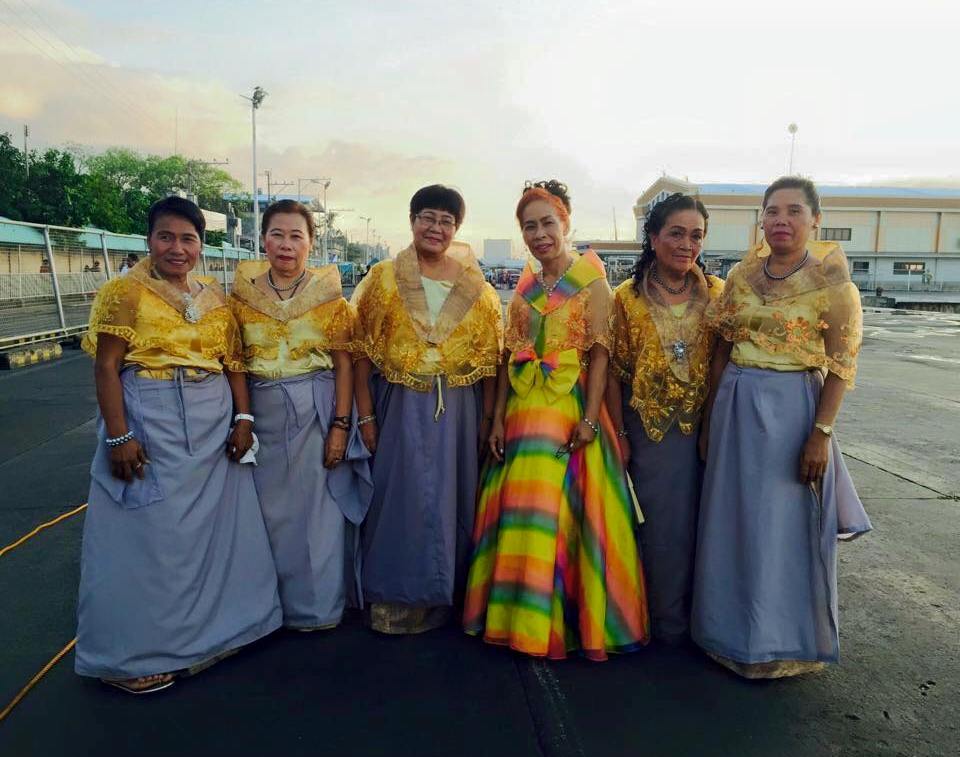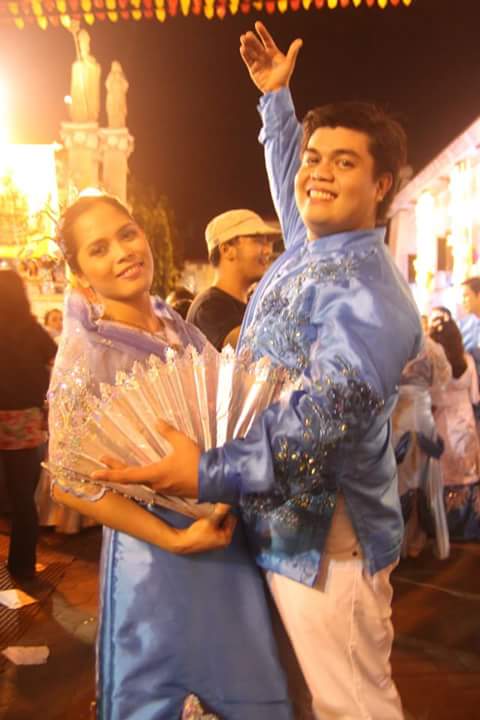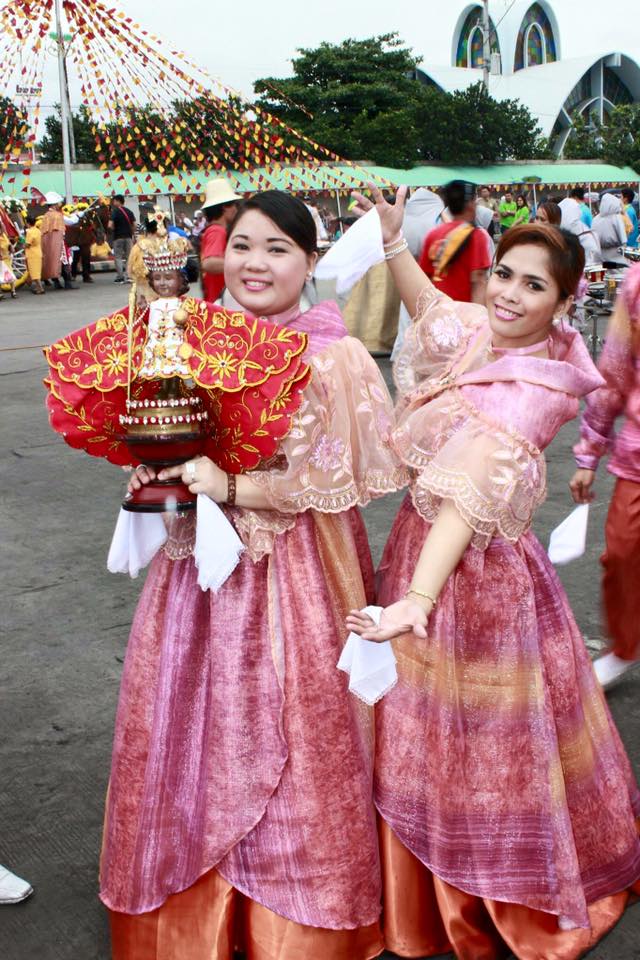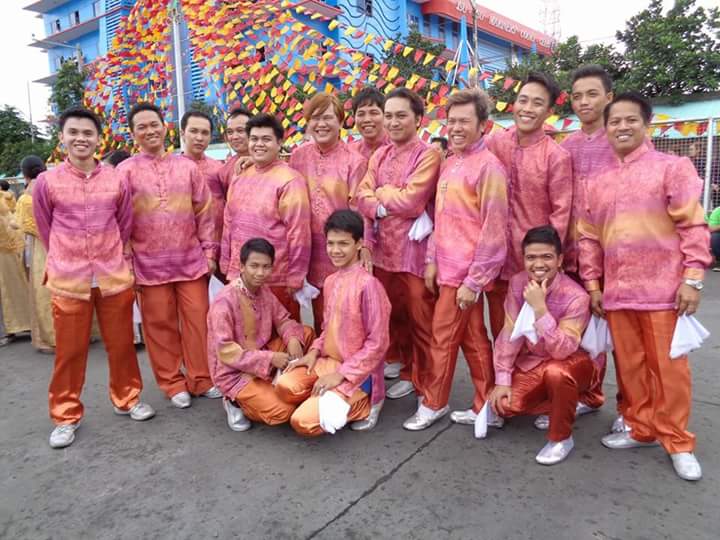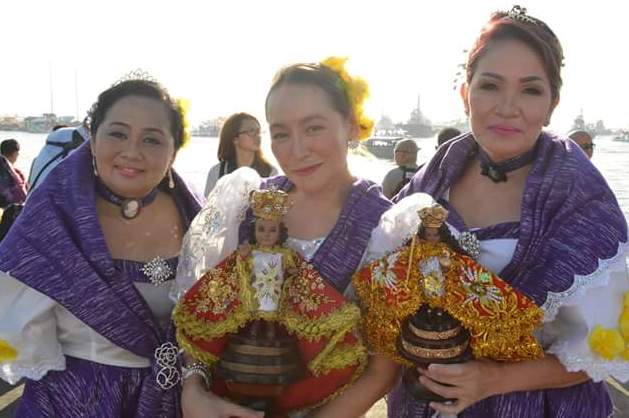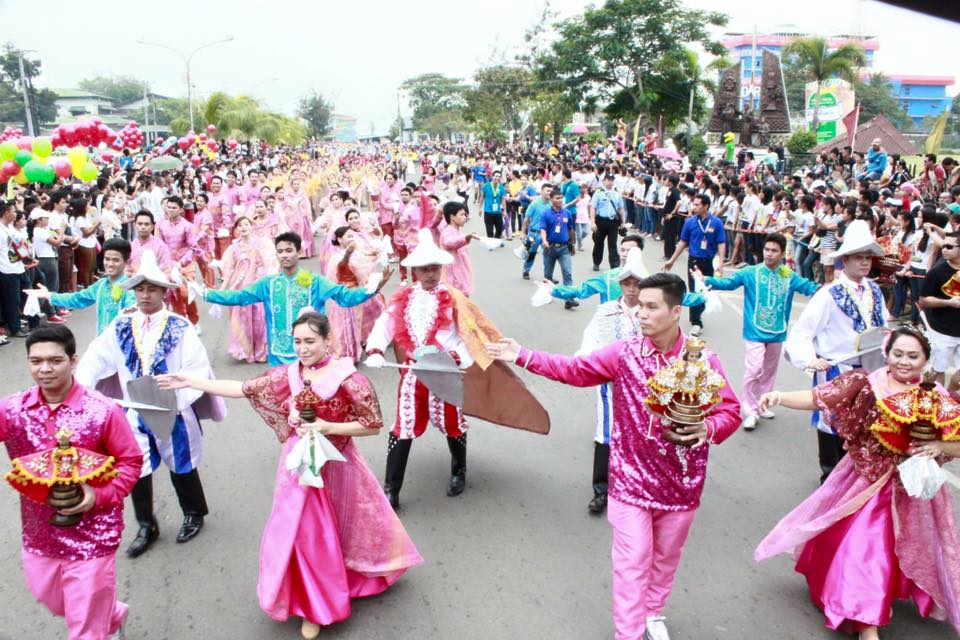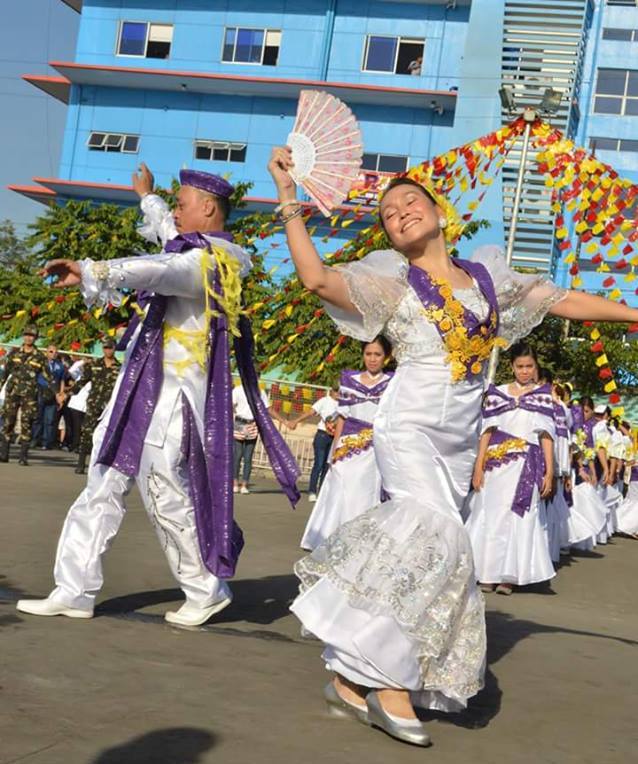For someone who prefers to learn about a place as she goes, my knowledge of Cebu’s Sinulog Festival was embarrassingly limited to the street parties and the colorful parade. Although I knew that, like any other Philippine festival, this globally-known celebration is ingrained with a significant cultural, historical, and/or religious origin; I honestly wasn’t expecting a sea of two million people during its solemn foot procession.
During the solemn foot procession
More than the wild street parties and the colorful grand parade, though, I would say that the highlight of my 2016 Sinulog Festival experience happened on a clear Saturday morning, when I went to the reenactment of the baptism of Rajah Humabon and Queen Juana at the Basilica Minore del Santo Niño, thinking it was just a simple affair, only to find a huge crowd and an entire presentation so laden with culture and history that it went ahead and literally made me cry.
The Sandiego Dance Company performing during the Reenactment
If I were to describe specific moments that made an impact during the Reenactment, I would pinpoint two: first, the traditional dance rituals; second, the collective chant of “Viva Señor! Pit Señor!” by the thousands of devotees as they waved their images of the Child Jesus. I still have goosebumps when I think about the latter! As for the former, I would have everyone know that I have quite the fascination for culture and tradition. This fascination had compelled me to seek out one of the groups who make an annual dance offering to Señor Sto. Niño.
The “Sinulog” in Sinulog Festival refers to the traditional religious dance by candle vendors as a way of offering prayers to the Child Jesus. Cofradia del Sto. Niño, an association of devotees of Sr. Sto. Niño that started in Cebu in the 1980s and was founded by the late Rev. Fr. Ambrosio Galindez, has members expressing their faith through this dance every year since its founding.
The Cofradia performing the traditional “Halad”
“It is truly our aim to promote the true dance and essence of Sinulog,” explains Ms. Rosalinda Amora-Murillo, National Secretary of the Cofradia.
Mother Linda, as she is fondly referred to by the Cofradia’s members, has taken on the role of “Rayna Juana” – wife of Rajah Humabon, who holds the image of Sto. Niño during the traditional Sinulog dance, since 2006. At 60 years old, she says that she will continue to dance as long as she can, believing that the Sr. Sto. Niño had given her good health to continue her “panata.”
Mother Linda (in the rainbow dress) with some of the elder dancers of the Cofradia
Photo courtesy of Claire Onari
When asked about their motivations in dancing the Sinulog, Cofradia members are quick to share their answers.
“During my second year as a dancer, I asked for guidance from Sr. Sto Niño regarding my career – whether I should stay or not,” recalls Janjan Arnejo, 30. “Four months after the Sinulog, I got promoted! And so I promised to dance again on the next year to give thanks for that blessing.”
Janjan during his first year of dancing the Sinulog
Photo courtesy of Janjan Arnejo
Claire Onari, 24, shares that doing the “Halad” for the Child Jesus gave her a firmer faith, believing that a sickness she’s been carrying for three years had been healed because she danced the Sinulog. “Dancing for Sr. Sto. Niño is a performance filled with strong faith,” she adds.
Claire holding an image of the Child Jesus during 2015’s fluvial procession
Photo courtesy of Claire Onari
In spite of the grueling late-night practices, many are still keen to join the performances. Mother Linda shares that there is no audition and everyone, even nonmembers, are welcome to partake as long as they are truly willing.
Ms. Evelyn Maghuyop, 68, is one of those nonmembers and she’s been dancing with the Cofradia for ten years.
“My most memorable experience,” Ms. Evelyn begins, “was in 2015, when I opted to dance despite just having recovered from a ruptured intestine. I almost fainted during the street dance but eventually made it to the church. That moment made me realize that I needed to stay healthy so I can continue to dance for Sr. Sto. Niño.”
As already evident, Cofradia’s Sinulog dancers are composed of devotees from all ages and all walks of life, offering time, effort, talent, and money to put together a performance worthy of the Child Jesus.
The Cofradia’s Sinulog dancers are not only composed of ladies but of gentlemen as well
Mary Anne Carbon, whose YouTube video of Cofradia’s performance paved the way for me to get in touch with the group, tells me, “Our choreographer is the legendary Dax Barlaan, current president of the Cebu provincial chapter of the Philippine Folk Dance Society. Our lead dancers Mary Rose Villacastin-Maghuyop, Bong Lofranco, Mary Loe Singson, and Hazel Coronel are prominent Cebuano performers, and all of them, like the rest of us, offer their talents for free.”
Female Lead Dancers. L-R: Mary Loe Singson, Mary Rose Maghuyop, Hazel Coronel
Photo courtesy of Mary Anne Carbon
Legendary Cebuano choreographer Dax Barlaan (second from right) during the 2015’s street dance
Photo courtesy of Claire Onari
Bong Lofranco and Mary Rose Maghuyop performing the traditional “Halad” during this year’s fluvial procession
Photo courtesy of Bong Lofranco
This shared expression of devotion makes one wonder how these guardians of a tradition think of street parties and the apparent “commercialization” of the Sinulog Festival.
“Young people often associate Sinulog with street parties when it should be about honoring Sr. Sto. Niño,” states Mother Linda. “This is why we continue to dance, so we can remind people what Sinulog is really all about.” She adds that they’d even joined the grand parade in the past, donning the traditional attire of the Spanish-era candle vendors and dancing the original steps.
“I think the street parties are just the icing on the cake,” says Janjan. “It’s still clear what the main celebration is all about, as evidenced by the 2 million people who attended the foot procession.”
While it’s true that most people who fly to Cebu are merely looking to have a fun time with all the street and rave parties, it’s refreshingly comforting that there are still many – two million, in fact – who carry the true meaning of the Sinulog Festival in their hearts. And isn’t it just amazing that even those who are subscribers of a different religion come to Cebu just so they could partake in this religious and cultural event? Personally, I think the Sinulog Festival is a product of evolution.
And, sooner or later, party-goers are bound to ask about the meaning behind “Pit Señor.”
Catch the Cofradia del Sto. Niño de Cebu perform once again this April for Kaplag – the anniversary of the discovery of the image of Sto. Niño. For affordable flights and ticket promos to Cebu, visit www.airasia.com and www.facebook.com/AirAsiaPhilippines. Check out also these photos from the 2016 Sinulog Festival that’ll make you want to join in next year. And while we’re at it, don’t miss out on these 4 must-try restaurants when you’re in the Queen City.

